Expression Technique Laboratory
AN INTRODUCTION TO MANUFACTURING FACILITIES:
MACHINES AND EQUIPMENT

Introduction
The Expression Technique Laboratory (ETL) is a facility that enables students to support their skills in designing and developing innovative products through the creation of design sketches and physical models. By utilizing various tools and facilities, and working with materials such as wood and styrofoam, students can express their creative and innovative ideas, resulting in products with detailed and realistic visualizations. ETL has the following objectives:
- Students are able to create product sketches and mock-ups according to their creativity and desired innovations.
- Students can enhance their creativity in developing innovative product designs.
- Students gain understanding and hands-on experience in design and manufacturing processes for creating innovative products.
Facilities
Bench Drill Machine.
A bench drill is a stationary drilling machine mounted on a workbench, designed to deliver high precision in creating holes in various materials such as wood, metal, and plastic. It is equipped with an electric motor that drives the spindle in a vertical motion, enabling users to accurately control both the depth and positioning of the drill. Additionally, the worktable is height-adjustable, allowing for greater flexibility and adaptability to different workpiece dimensions. Bench drilling machine is depicted in Figure 1.
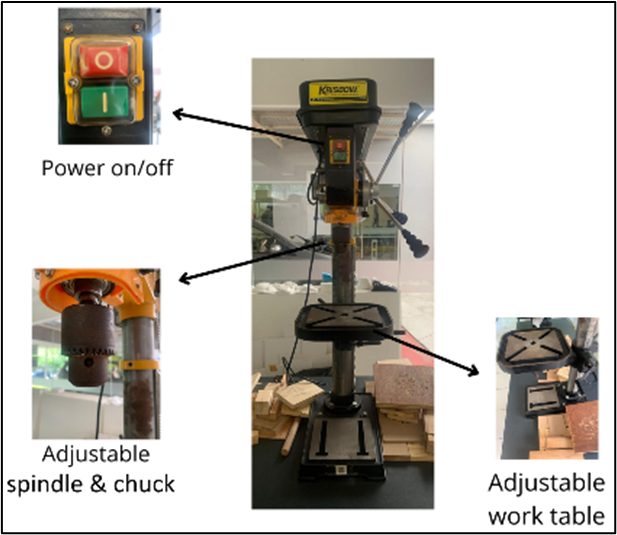
Figure 1. Bench Drilling Machine
Mini Wood Bandsaw Machine: Krisbow 8” and 10”
A mini wood bandsaw is a cutting tool that uses a continuous band-shaped blade to precisely cut various materials such as wood and metal. In its operation, the machine is typically equipped with an adjustable workbench, which can be tilted to enhance adaptability and work efficiency. The guidepost functions to adjust the blade height and maintain its stability in accordance with the thickness of the material being cut. To achieve accurate cuts, an adjustable ruler is used to control the cutting distance, while a protractor is employed to determine the exact cutting angle. The combination of the Krisbow machine and these components ensures clean, consistent cuts that meet specific requirements.
An 8-inch bandsaw as shown in Figure 2 is typically employed for lighter tasks and medium-sized materials, making it well-suited for detailed, curved, or small cuts within small to medium-scale workshops. Its compact design also enhances mobility and facilitates placement in confined workspaces. In contrast, a 10-inch bandsaw offers greater cutting capacity and can accommodate thicker or larger materials.
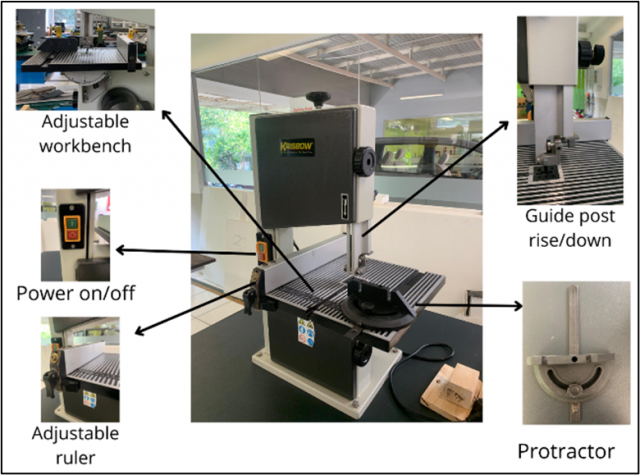
Figure 2. Mini Wood Bandsaw Machine (Krisbow 8”)
Belt and Disc Sander Machine.
A combination belt and disc sander are dual-function sanding machines commonly used in woodworking and light metal fabrication. It features a continuous belt for sanding large, flat surfaces and a rotating disc for edge work and detailed shaping. The disc section includes a tiltable worktable, adjustable up to 45 degrees. A disc sander uses a circular sanding disc that rotates, making it ideal for sanding flat surfaces as well as hard-to-reach corners. This tool is particularly suitable for tasks requiring high precision and detailed smoothing on wood, metal, or plastic, with a built-in protractor scale for precise angle sanding. Powered by an electric motor, the machine often includes dust extraction ports and safety guards. Its versatility and efficiency make it ideal for both rough material removal and fine finishing. At Binus ASO, ETL has two belt and disc sander machines (see Figure 3) to facilitate students in doing their work faster.
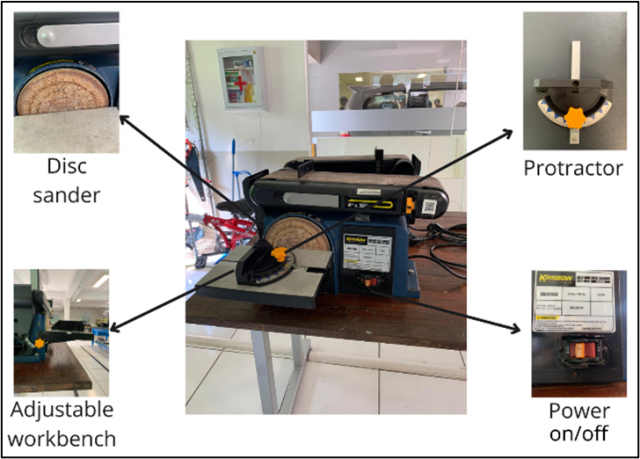
Figure 3. Belt and Disc Sander Machine
Wire Cutting Machine.
Hot wire cutting is a thermal cutting method commonly used to shape expanded polystyrene (styrofoam) with a high degree of precision. The process involves a nichrome wire that is electrically heated to a temperature sufficient to melt the material along the cutting path. The wire temperature can be precisely adjusted using a heat control knob, allowing the operator to tailor the heat level according to the thickness and properties of the material. As the process does not involve mechanical force, the wire cutting machine as depicted in Figure 4 produces smooth and clean cuts without generating debris.
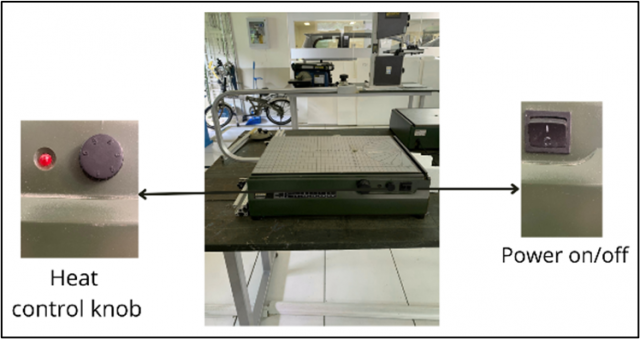
Figure 4. Wire Cutting Machine
Scroll Saw Machine.
Scroll saw is a precision cutting machine designed for intricate and detailed cuts on materials such as wood, plastic, or thin metal sheets. It operates with a fine reciprocating blade mounted on an adjustable arm and worktable. The machine is equipped with a speed variator, allowing the operator to adjust the blade’s movement speed to suit different materials and cutting requirements. This feature enhances control and accuracy, especially when working on complex curves or delicate patterns. The scroll saw is widely used in woodworking, model making, and fine decorative applications. At Binus ASO, ETL has four same size scroll saw machines as shown in Figure 5, allowing students to work in parallel.
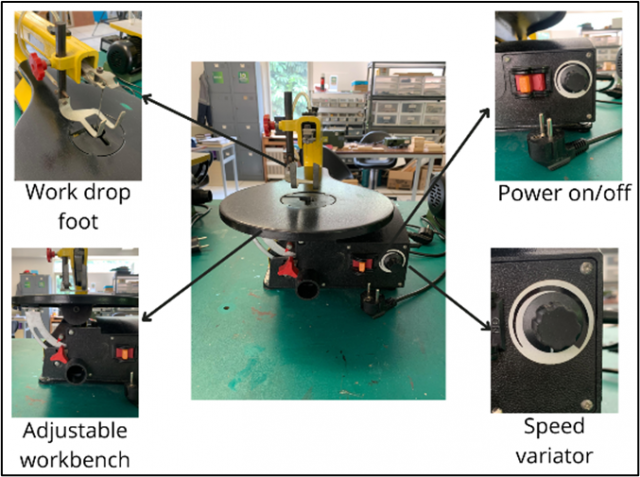
Figure 5. Scroll Saw Machine
Circular Saw Machine.
A circular saw is a power cutting tool that uses a rotating circular blade to cut materials such as wood, plastic, or metal. It can perform both straight and angled (beveled) cuts efficiently. Most circular saws are equipped with a tiltable blade (bevel adjustment), as well as a protractor gauge and ruler scale to accurately set the cutting angle and depth. These features enhance the tool’s precision and versatility, making it suitable for various construction and woodworking applications. At Binus ASO, ETL has two circular saw machines (see Figure 6) that facilitate students to work in parallel.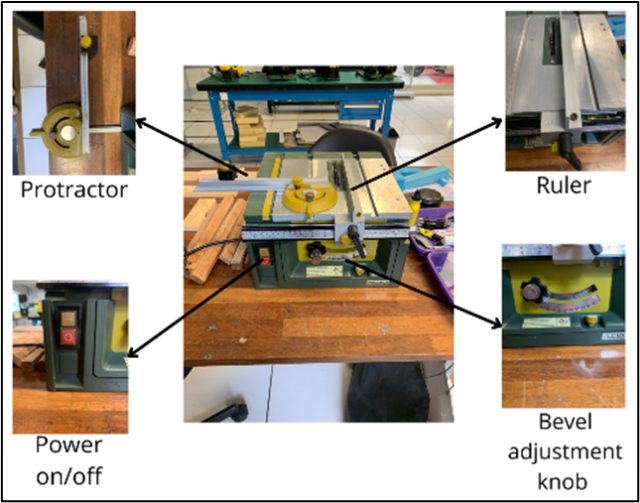
Figure 6. Circular Saw Machine
Ryu RTS 10 Saw Machine.
A table saw is a stationary woodworking machine that utilizes a circular saw blade mounted on an arbor, protruding through the surface of a flat table. This configuration allows for precise and efficient cutting of various materials, predominantly wood. The table saw as described in Figure 7 is recognized for its versatility and precision in executing a range of cuts essential to woodworking and carpentry. The primary operations include (1) rip cuts, which are longitudinal cuts made parallel to the grain of the wood, used to reduce the width of a workpiece; (2) cross cuts, which are transverse cuts made perpendicular to the grain, employed to shorten the length of a board; and (3) bevel cuts, which are angled cuts achieved by tilting the saw blade relative to the table surface, facilitating the creation of miter joints and decorative edges.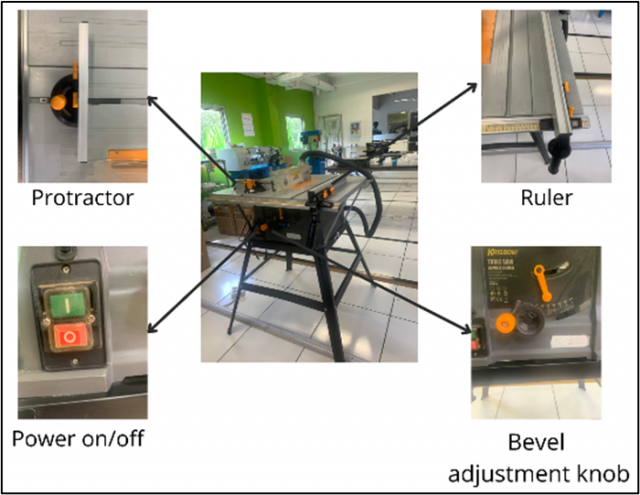
Figure 7. Table Saw Machine
Milling Machine.
A milling machine is a machine tool used to remove material from a workpiece by means of rotary cutters. This process enables the creation of various surface shapes, such as flat, curved, or grooved surfaces, with high precision. Milling machines as depicted in Figure 8 play a crucial role in helping students understand the fundamental principles of cutting and material processing. Therefore, a deep understanding of milling machines and their applications is essential for professionals in the fields of engineering and manufacturing.
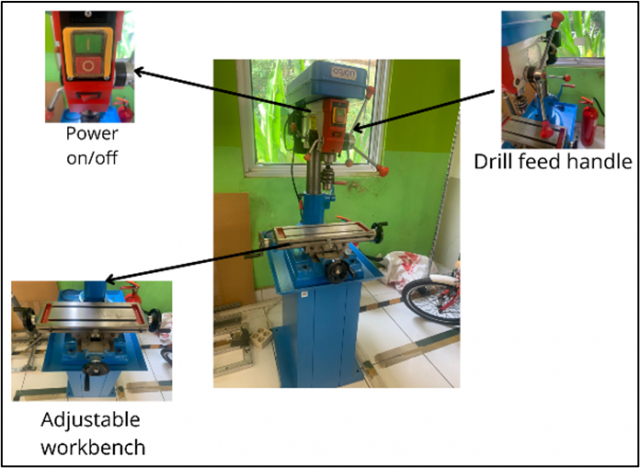
Figure 8. Milling Machine
Bench Lathe Machine.
A lathe machine (Figure 9) is a machine tool used to shape a workpiece by removing material through cutting. This process involves rotating the workpiece around its main axis, while a stationary cutting tool is moved linearly, either parallel or perpendicular to the axis of rotation. This method allows for the creation of various geometric shapes, such as cylinders, cones, threads, and flat surfaces, with high precision.
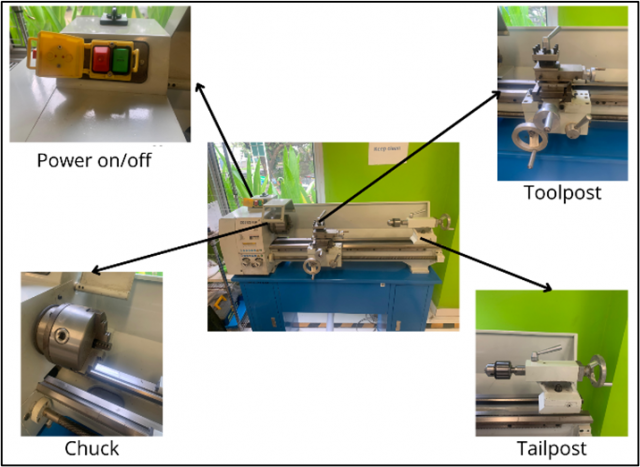
Figure 9. Bench Lathe Machine
Support Equipment
Protractor
On several tools such as the disc sander, circular saw, bandsaw, and wire cut, an additional tool in the form of a protractor is needed to cut precise shapes as desired, especially at 90-degree angles, so that the workpiece results are flat and square. The protractor in ETL is equipped with a locking mechanism to maintain the set angle as shown in Figure 10.
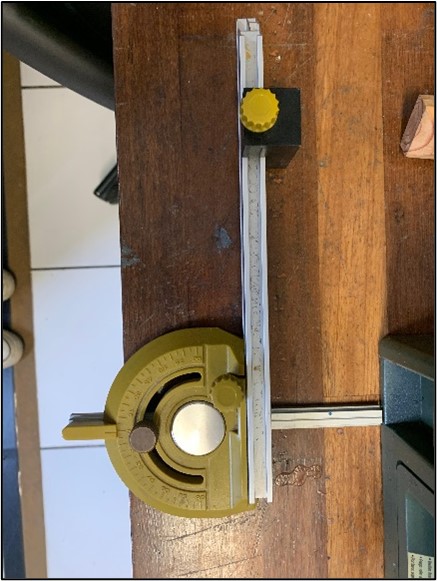
Figure 10. Protractor
Vise.
A vise is a mechanical auxiliary tool used to clamp and hold a workpiece firmly and stably during operations such as filing, drilling, or cutting. It is an essential component that supports precision and safety in the workplace, as it prevents shifting or vibration that could affect the result. This tool consists of two jaws—one fixed and one movable—controlled by a threaded screw to apply the necessary clamping pressure. The use of a vise (see Figure 11) allows the operator to work hands-free, thereby increasing efficiency and accuracy in both technical work and practical training in vocational or engineering education settings.
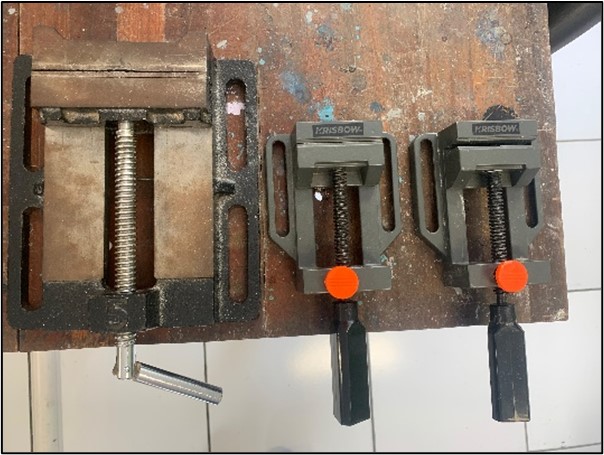
Figure 11. Vise
Personal Protective Equipment
Apron.
The apron holds a significant role as an essential component of personal protective equipment, contributing to the establishment of a safe and compliant work environment in accordance with occupational safety standards. Its utilization forms an integral part of the implementation of Occupational Health and Safety (OHS) principles. Aprons as depicted in Figure 12 serve to protect workers from a range of potential hazards, including physical injuries, chemical exposure, contamination, and sharp debris that may cause harm. The use of an apron reflects a conscious commitment to upholding safety protocols and maintaining a high standard of professionalism in the workplace.
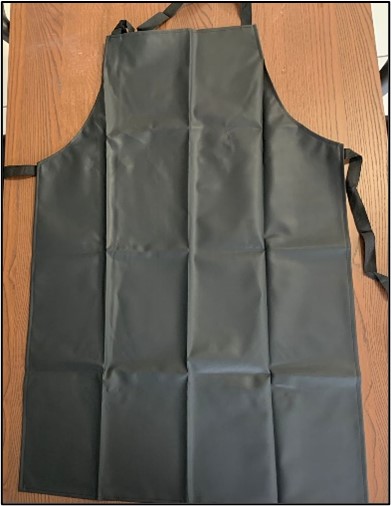
Figure 12. Apron
Safety Glasses.
Safety glasses are personal protective equipment designed to provide optimal protection for the eyes against various potential hazards in the workplace, such as exposure to dust, chemical splashes, metal fragments, and other harmful particles. These glasses are typically made from impact-resistant transparent materials, allowing clear visibility without compromising safety. The use of safety glasses (see Figure 13) is a critical component in the implementation of OHS standards, particularly in industries, laboratories, and construction sites, aiming to minimize the risk of eye injuries and promote a safe and professional working environment.
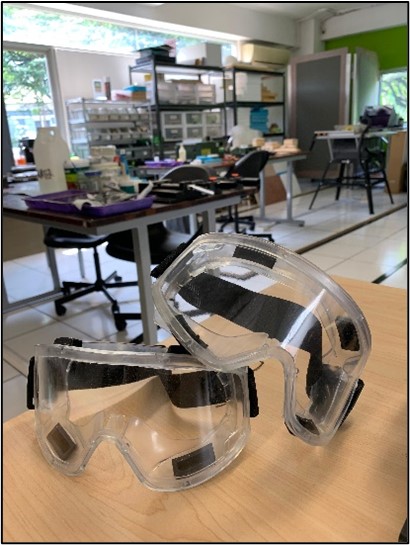
Figure 13. Safety Glasses
Face Shield.
A face shield is a protective device specifically designed to provide comprehensive protection for the facial area against various potential hazards such as liquid splashes, dust, harmful particles, and chemical exposure. This device is made from transparent material with high impact resistance, allowing optimal visibility without compromising the level of protection. The use of a face shield as shown in Figure 14 is typically combined with other personal protective equipment, such as masks and safety glasses, especially in high-risk work environments, to minimize the potential for injury and support the strict implementation of OHS standards.
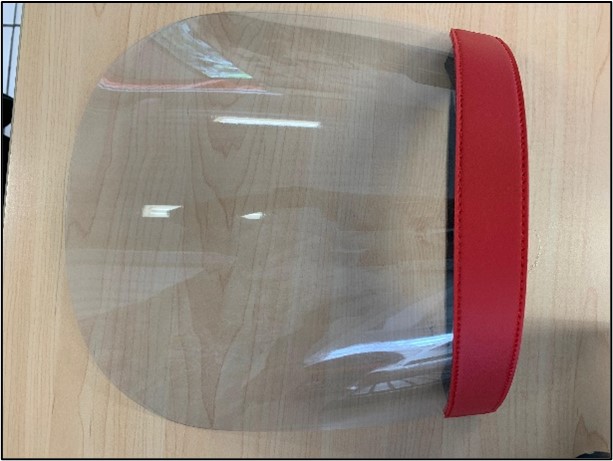
Figure 14. Face Shield
Safety Gloves.
Safety gloves are protective hand equipment designed to provide optimal protection against potential workplace hazards such as mechanical injuries, skin irritation, chemical exposure, extreme temperatures, and contact with sharp objects. These gloves are made from various specialized materials tailored to the specific risks encountered, such as rubber, leather, or heat- and chemical-resistant fabrics. The use of safety gloves as depicted in Figure 15 plays a crucial role in maintaining workers’ safety and health while also supporting increased comfort and productivity in the daily execution of tasks in the workplace.
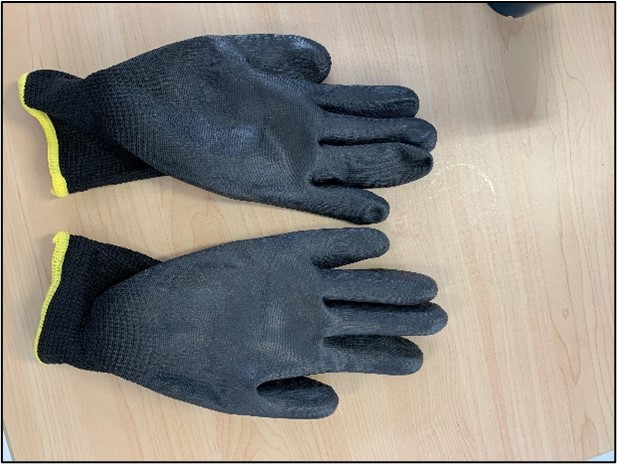
Figure 15. Safety Gloves
Face Mask.
The utilization of face mask constitutes a vital component in safeguarding the health and safety of personnel within occupational settings. Face mask functions as effective respiratory protective devices, designed to filter airborne particulates, smoke, and various hazardous substances commonly encountered in work environments, particularly during operations such as welding, metal cutting, or painting. The implementation of face mask usage significantly mitigates the risk of respiratory ailments resulting from exposure to airborne contaminants. Furthermore, a face mask (see Figure 16) plays an instrumental role in fostering a cleaner and safer workplace. Accordingly, the adoption of face mask is integral to the rigorous enforcement of OHS protocols.
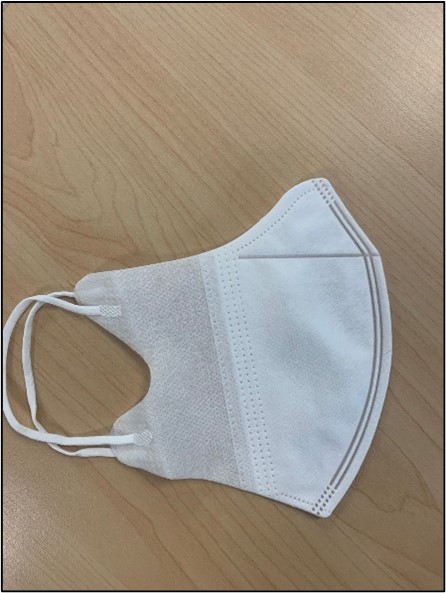
Figure 16. Face Mask
Hair ties.
Hair ties serve a critical function within the workshop environment, particularly about maintaining hygiene and ensuring safety. By securely fastening hair, hair ties prevent long hair from becoming loose, which could otherwise interfere with work activities, obstruct vision, or become entangled in rotating machinery and equipment, thereby posing significant safety hazards. Moreover, the use of hair ties contributes to enhancing workers’ comfort and concentration during task execution, ultimately supporting optimal productivity. Consequently, the adoption of hair ties as shown in Figure 17 is an essential component of comprehensive safety protocols aimed at fostering a safe and efficient workplace.
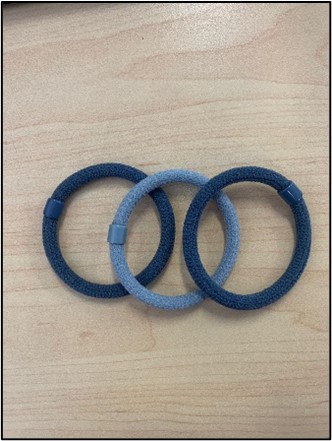
Figure 17. Hair ties
At Binus ASO, safety is the most priority factor that must uphold in every circumstances. Therefore, every party who wants to use ETL facilities must follow the Standard Operating Procedure (SOP) along with the personal protective equipment. Table 1 shows the requirements of personal protective equipment that must be worn during the process of using machines.
Table 1. Safety Standards
| Machine |
Personal Protective Equipment |
||||
| Apron | Safety Glasses | Face Shield | Safety Gloves | Face Mask | |
| Drilling | ✓ | ✓ | |||
| Bandsaw | ✓ | ✓ | ✓ | ✓ | |
| Belt and Disc Sander | ✓ | ✓ | ✓ | ✓ | |
| Wire Cutting | ✓ | ✓ | ✓ | ||
| Scroll Saw | ✓ | ✓ | ✓ | ✓ | |
| Circular Saw | ✓ | ✓ | ✓ | ✓ | |
| Milling | ✓ | ||||
| Bench Lathe | ✓ | ✓ | ✓ | ||
Authors:
Hendrawan Sukma, S.T.
Benedictus Rahardjo, Ph.D.
